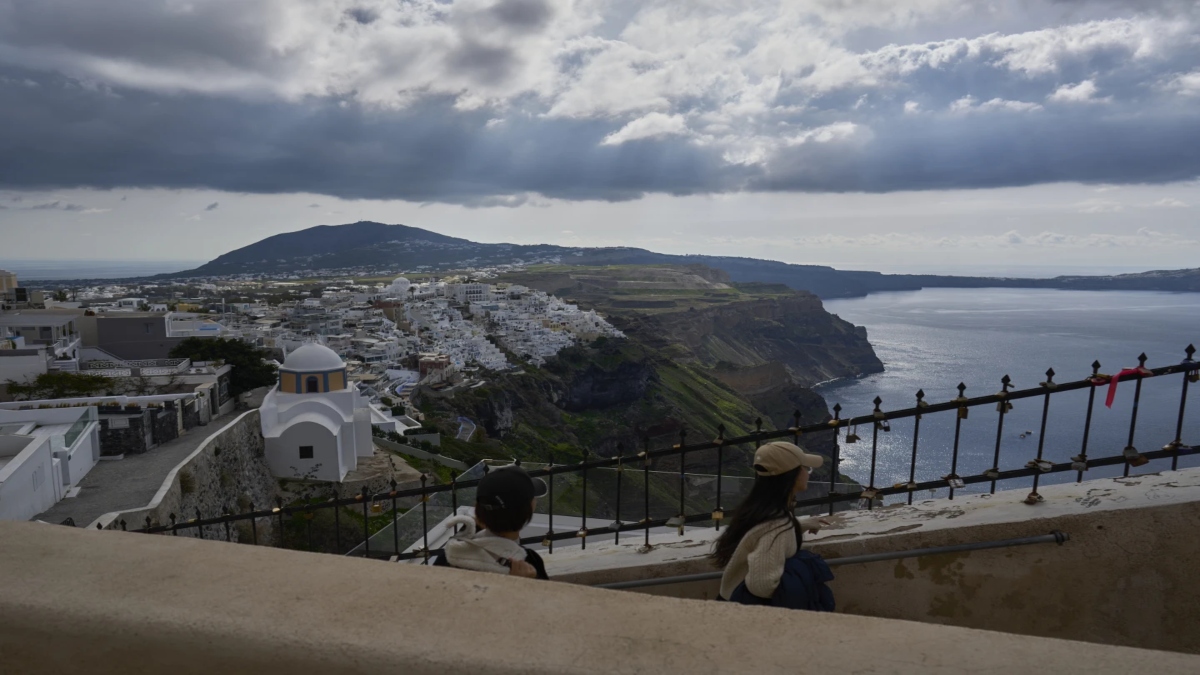Multiple earthquakes struck the waters around the Greek island of Santorini just hours after authorities there declared a state of emergency in the region. The tourist hotspot has been marred by seismic activity this week with thousands of tremours recorded since Sunday. On Thursday evening, a magnitude of 4.6 quake was recorded at 8:16 pm (local time).
The tremours were felt between Santorini and another island, Amorgos, followed by a 4.2 magnitude quake rocking the region nearly two hours later. In the midst of this, Santorini residents have begun night patrols due to fears that the island might get looted since most of the residents have evacuated the region.
After the emergency was declared on the Greek island, more than 11,000 people have been evacuated. The authorities are now reporting earthquakes in minute-by-minute intervals. Experts said that they are still unclear exactly when these seismic activities in the region will come to an end. The most severe quake the island witnessed was of magnitude 5.2 which took place on Wednesday. So far no injuries have been reported, and there has also been no major damage on the island, BBC reported.
What is happening in Santorini?
Earlier this week, Greece’s Prime Minister Kyriakos Mitsotakis described the recent seismic activity as an “extremely intricate geological phenomenon”. Several experts agreed with the Greek premier’s assertion. “It is really unprecedented, we have never seen something like this before in [modern times] in Greece,” Dr Athanassios Ganas, research director of the National Observatory of Athens told BBC.
It is pertinent to note that Santorini lies on the Hellenic Volcanic Arc, which is a chain of islands created by volcanoes. However, the region has not seen a major eruption in recent times. The last time the region saw volcanic activity on the island was back in the 1950s. Hence, the reason behind the current crisis is not clear.
Dr Ganas mentioned that the seismic activity began near the island following the awakening of a volcano on Santorini last summer. Since January this year, there has been a surge in these activities, with frequent and small tremours being recorded. The matter became concerning after thousands of earthquakes were recorded since Sunday, with Wednesday’s being the most significant yet. “We are in the middle of a seismic crisis,” Dr Ganas remarked.
Impact Shorts
More ShortsHow long will it last?
Experts are saying it is impossible to tell exactly how long the seismic activities in the region will last. However, they are hoping that the Wednesday quake that struck the area will probably be the biggest one that rattled the island.
Meanwhile, the Greek authorities are warning that these activities could go on for weeks. Not a lot is clear about the phenomena. Experts are also unaware whether this chain of quakes are foreshocks leading up to a large earthquake or their own event. Professor Joanna Faure Walker, an earthquake geology expert at UCL’s Institute of Disaster Risk Reduction told BBC that some large earthquakes do experience foreshocks.
However, Dr Ganas made it clear that what is happening right now is not a volcanic earthquake. Those tremours are usually of low frequency and come in waveforms, this has not been exhibited in any of the tremours that have occurred as of now. Meanwhile, additional police units and military forces have been deployed on the Island to help the region cope with any major earthquake.
Despite all warnings, some of the islanders are not phased by the recent seismic activities. “I’m not afraid at all,” one Santorini resident, who decided to stay put on the volcanic island despite thousands of her neighbours fleeing amid the ongoing earthquakes, told BBC. “For 500 years, this house has lived through earthquakes and volcanic eruptions and it’s still standing,” another resident named Chantal Metakides told AFP, insisting that she would not leave the region.
With inputs from agencies.
)